Caryl Hart & Anastasia Suvorova

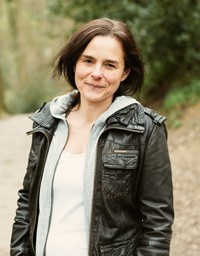
About Author
Discover how a real life story helped inspire this picture book, The Girl Who Planted Trees, about a young girl who plants a forest for her community.
Caryl Hart is a full-time children's writer, who also runs creative workshops with local schools. She lives in Sheffield with her guitar-playing husband, two cheeky daughters and a menagerie of pets. As well as writing, Caryl loves walking in the hills, swimming, snuggling, baking, weeding, running, sleeping, chatting, and sitting in cafes.
Illustrator Anastasia Suvorova has been drawing, dreaming and inventing stories since she was a child. Now, she illustrates books, magazines and games. Books are her greatest love because they are doors that open up new magical and wonderful worlds. She creates most of her illustrations as digital art, trying to bring the feeling and warmth of traditional materials into them.
Interview
The Girl Who Planted Trees (Nosy Crow Books)
March 2022
Drawing on the true story of a man who brought a mountain forest back to life, Caryl Hart and Anastasia Suvorova's new picture book, The Girl Who Planted Trees, focuses on the environmental impact that one child and her community can have - and reminds young children to never give up.
The Girl Who Planted Trees Review
Competition to win a copy of The Girl Who Planted Trees
In this short video, author Caryl Hart introduces The Girl Who Planted Trees and shares a short reading as well as ideas for children's own activities to support the environment:
Q&A with Caryl Hart
Find out how a true story helped inspire The Girl Who Planted Trees plus activities to support the environment, and why children need positive messages about their world and the environment.
1. Can you tell us about the kinds of picture books you enjoy writing?
I think picture book are a great way to help expand children's understanding of the world and the people around them, so I love writing stories that encourage empathy, friendship, kindness, tolerance and a love of our natural world. Many of my books also include strong female characters and people with a variety of skin tones, hair, clothing and body types. I also love writing in rhyme although The Girl Who Planted Trees is in prose.
2. What is your new book, The Girl Who Planted Trees, about?
The Girl Who Planted Trees is the story of a young girl who lives in a small, dry village at the foot of a great grey mountain. One day she discovers that the mountain was once covered in trees but that over the years these have been cut down and the animals that lived there have disappeared. The girl decides to take action and sets off to plant some new trees herself.
She soon learns, however, that getting trees to grow on an exposed, dusty mountain is much more difficult than she thought. But she does not give up. And with the encouragement of her grandfather, her own determination and the help of her community, she eventually makes her dream - and everyone else's' - come true.
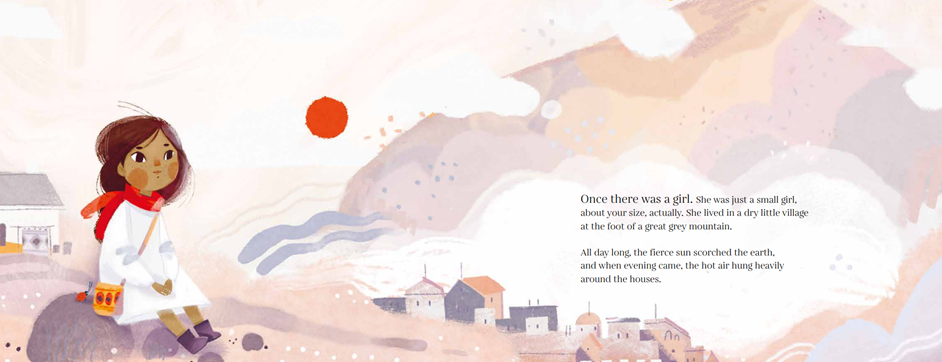
3. Is it based on a true story?
This story was first inspired by the work of an Indonesian man called Saiman. He single-handedly planted over 11,000 Banyan and Ficus trees over 250 hectares of mountain side around his village - an area that had lost many trees due to wildfires. Despite being ridiculed by others, he believed the trees' deep roots would help improve the local water supply by drawing up water from far down in the earth.
His work, which has so far taken over 25 years, has brought dried-out springs back to life, providing water for local homes. The lack of rain in the area once limited farmers to growing one crop a year, but Saiman's reforestation work has now raised the water table enough for farmers to successfully grow two to three crops a year.
You can watch his story here
I have since learned about Sebastia Salgado and his wife, who have planted two million trees over 20 years to restore over 600 hectares of forest around Salgado's once-lush childhood home in Minas, Brazil. Together with their community, they have turned once barren land green, reinstating streams and bringing back over 290 species of plants and animals.
You can find out more about them here
And then there's Jadav Payeng who has planted a tree every day for the last 40 years to combat soil erosion on Majuli Island, Northern India. He has single-handedly planted 550 hectares of forest, attracting Bengal tigers, and rhinos back to the area.
You can find out more about his story, here and here.
I think it's incredible that these people's vision, determination and altruism have helped improve the lives of so many people, plants and animals and brought these once-barren habitats back to life. It's so easy for us to feel overwhelmed by large scale environmental problems, but these stories prove that we are not powerless. With courage and determination, we can all make a difference.
4. Do you feel it's important that children - in all the problems around climate change - are given positive messages, too?
I think it's vital that we show children that it IS possible to make a difference. I do feel children are completely over-burdened these days with messages of doom and gloom about the world they have inherited. A world our generation and our parents' generation have damaged and disrespected for decades. Without messages of hope, our young people might just give up before they've even started. We all need positive role models and evidence that we can be the change we want to see.
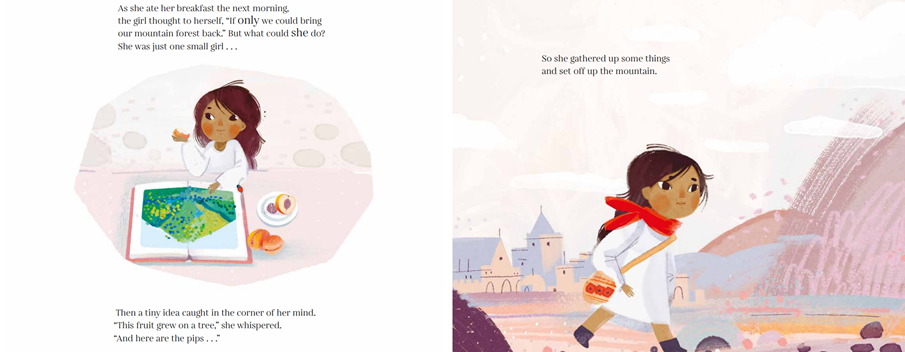
5. The girl has a lovely relationship with her grandfather, how did that develop?
As the story evolved, I wanted to introduce the concept that the mountain was not always barren and dry as a way to show that our environments do change over time. So, I created a grandfather figure who could show the girl what the mountain was originally like.
It is this realisation that motivates the girl to try and make a difference. I wanted the child to have someone loving to support and encourage her and was also keen to represent a different family set-up. As a nation, we are not very good at valuing the older people in our communities, so bringing in a grandparent felt like a nice way to remind readers that older people have valuable knowledge and experience that is still relevant and useful.
6. There is also a strong emphasis on community, why is that aspect important?
When I was growing up, my family did not really speak to our neighbours, so I didn't discover the importance of community until I was an adult. I now realise how amazing it can be to live in a close community where people support each other. I wanted to remind readers that people can achieve great things when they work together!
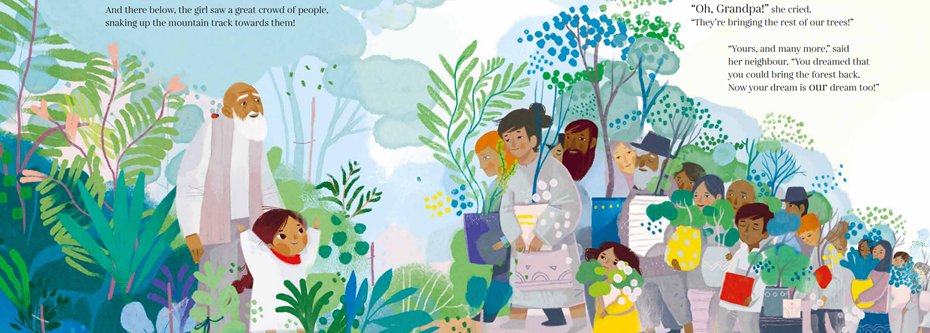
7. What would you like children to take from the picture book?
I would like children to take comfort from our book. I want them to learn that change is possible and that they too can make a difference to the things they care about. I want them to know that true change can take time and that they will need to be tenacious and determined, but that they do have the power to make things better, especially if they work together with others.
8. Any tips on how to share it with them, or activities they could get involved in?
Wouldn't it be great if every family who reads this book decided to plant a tree of their own?! Whether it's in their own garden, in their school grounds, or in a public space, or even by the side of the road, if we all planted just one tree in our lifetime, imagine how our environment would change. (Note that you would need to get permission from your local authority to plant trees in public spaces).
Families could also discuss other things they are not happy about and work together to make a change. I think it's important to start with something small and achievable because the feeling of satisfaction we get from achieving a small goal encourages us to reach for bigger and greater goals as we grow.
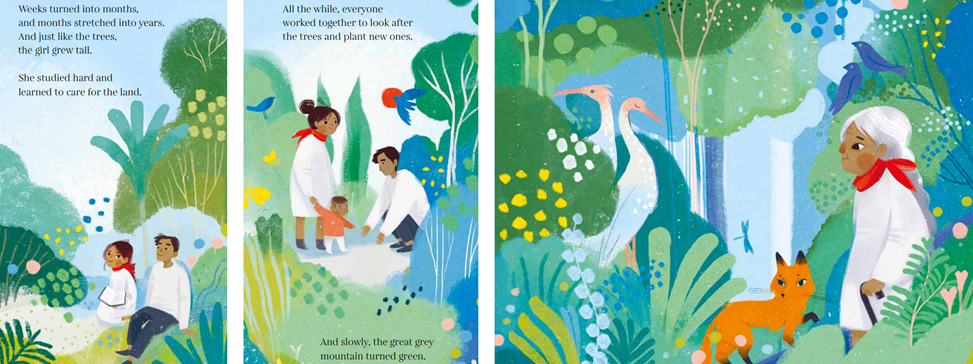
9. Are you writing more stories about the environment?
I have a series called Meet the World with Bloomsbury Children's Books, which are rhyming adventures to meet the different features of our world. The first two books, Meet the Planets and Meet the Oceans have proved very popular. Book 3 is out next year and book 4 in 2024. I've also got a new environmentally themed series based on small-world play, which is being published by Hachette. The first of these is out next year, so there's plenty to look forward to!
10. If you could make one change in our behaviours to support the environment, what would it be?
I would love people to stop buying food packaged in plastic!
 The Girl Who Planted Trees
The Girl Who Planted Trees
